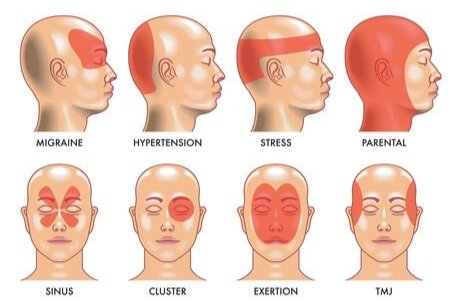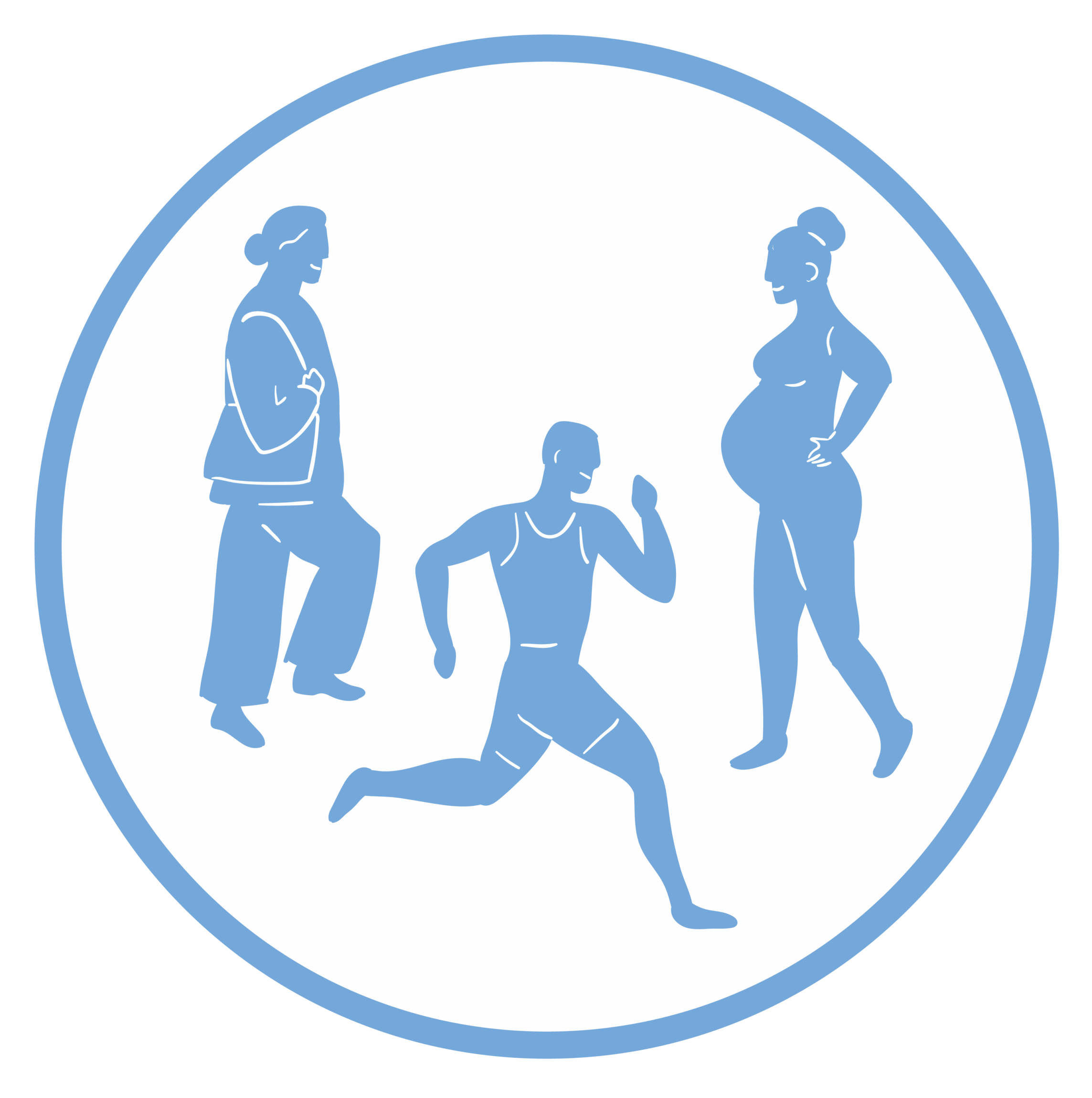This article is also disponible en français – Headaches are a bit like an unexpected bump in the road: they show up at the worst possible moment and break your momentum. They can range from a minor inconvenience to a full-blown storm that ruins your whole day. Don’t panic, here we explain the different types of headaches, their causes and how osteopathy can help you regain your balance.
In this article, we don’t dive into the medical jargon of headaches and migraines. Instead, we offer a clear, easy-to-understand guide to help you understand your headache and what you can do about it.
Quick links :
What’s a headache?
A headache is like a warning signal from your body. A headache manifests itself as pain or discomfort in the head, scalp, eyes, jaw or neck. Sometimes it’s just a minor inconvenience, but other times it hits so hard that it can completely turn your day upside down. Identify your type of headache to get on the trail of your best remedy.
Headaches generally fall into two broad categories, depending on their cause.
- Primary headaches These are the most common: migraines, tension headaches and cluster headaches. They appear on their own, without any underlying health problem.
- Secondary headaches
These are a bit like “side effects”: they are triggered by something else, such as sinus problems, injury or illness.
Common types of headaches
tension headache, migraine, cluster headache, sinus headache

Source: CFP, StatCan
Headaches come in many forms, including tension headaches, migraines, cluster headaches and sinus headaches. In Canada, up to 78% of people suffer from tension headaches, while migraines affect around 8.3% of the population.
1. Tension headaches
They often manifest as a dull, continuous pain that grips the forehead, temples or back of the head. They can be triggered by :
- Stress
- Poor posture (bent over, sitting awkwardly)
- Excessive fatigue
- Too much time in front of the screen
2. Migraines
Migraines are a step beyond a simple headache. They can be triggered by hormonal changes, certain foods, dehydration or even a change in the weather. Their symptoms are often strong, such as :
- Sensitivity to light or noise
- Nausea, even vomiting
- Pulsating pain (feel your pulse), often on the side of the head
3. Cluster headaches
Cluster headaches are rare, but wow! are they intense. They strike in cycles, with sharp pain usually around one eye. They can be triggered by :
- Alcohol
- Tobacco
- Changes in sleep patterns
4. Sinus headaches
Sinus headaches are the unwelcome companion of sinus problems, caused by inflammation or infection. The pain manifests itself as pressure around the eyes, nose and forehead, often accompanied by annoying nasal congestion.
Common causes of headaches
Headaches can be caused by a whole host of factors, such as :
- Muscular tension
Poor posture or too much stress can contract the neck and shoulders, leaving the door wide open to headaches. - Dehydration
Even a slight lack of water can trigger a headache, so keep a bottle handy. - Hormonal changes
Whether during menstruation, pregnancy or other hormonal fluctuations, these can play a role in the appearance of headaches. - Lifestyle factors
A lack of sleep, irregular meals or too much screen time can also be culprits. - Underlying medical problems
Sometimes a headache masks a more serious concern, such as hypertension, infection or neurological disorders.
Here are some good habits you can adopt to prevent headaches
Prevention is better than cure, isn’t it? We encourage you to adopt good habits to prevent headaches. Osteopathy can also help relieve them, and the recommendations below will help you reduce the risk of relapses.
- Stay well hydrated
Dehydration is a common trigger of headaches. Make sure you drink at least 2 liters of water a day. - Good posture
Avoid slouching! Make sure your workspace is properly adjusted to support your body weight, and remember to take breaks to stretch and move around. - Learn how to manage stress
Incorporate relaxation techniques such as meditation, deep breathing exercises or regular physical activity into your routine to help manage stress. - Get a good night’s sleep
Aim for 7 to 9 hours of quality sleep a night on a regular schedule. - Watch your diet
Certain foods and beverages can trigger headaches. Beware of caffeine, alcohol and processed foods. A food diary can help you identify your triggers.
When should you consult a professional?
Having a headache from time to time is normal. But if it interferes with your activities on a regular basis, or if your headaches are particularly painful, it’s time to seek help.
See if :
- Your headaches are sudden and intense
- They are accompanied by fever, confusion, loss of balance or vision problems.
We hope this short guide has helped you identify your type of headache and what triggers it.Osteopathy offers a gentle, non-invasive approach to pain relief.
Sources :
Marie-Claude Dion B. Sc, CAT (C), D.O.
Marie-Claude is a certified athletic therapist, certified first responder and osteopathic member of Osteopathie Québec.
As you read about her, you discover a little about why people adore her: she’s a true expert, generous and caring.

Do you like our news?
Subscribe to our newsletter to stay informed.

